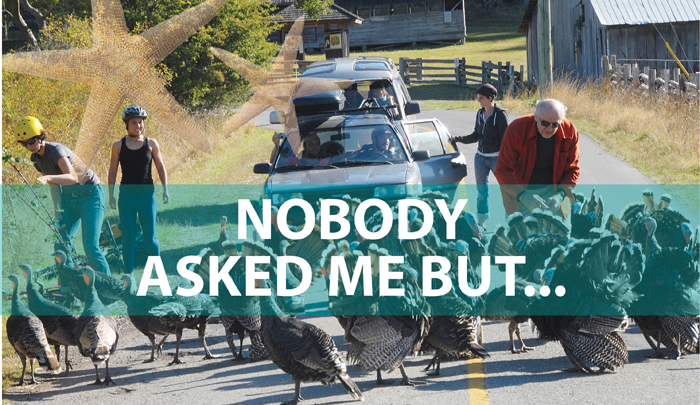“I’ve looked at clouds from both sides now.” These are the lyrics penned and sung by Canadian poet, painter and musician Joni Mitchell.
It was the mid-’60s and she was 20-something and probably considered herself a veteran of life’s dramatic upheavals by then. In the song, aptly titled “Both Sides Now,” she comes to the realization that it’s only cloud illusions that she’s found and that she doesn’t really know clouds at all. As the song continues, she comes to the same conclusion about how she looks at both love and, finally, life itself.
There is much we do know about clouds, however. First of all, they are not all the same. In fact, back in 1802, Luke Howard, an English manufacturing chemist and amateur meteorologist, proposed a nomenclature to differentiate between the different types of clouds. His system is fundamentally still functional today and that is probably why Howard is remembered as the “Godfather of Clouds.”
Howard classified clouds into seven basic groupings, depending on their shapes, altitudes and air temperature at which they occurred. He named the groupings: cirrus, cumulus, stratus, cirrocumulus, cirrostratus, cumulostratus, cirro-cumulostratus or nimbus.
The four core classifications include cirrus, which are the highest and most feathery looking, stratus, which occupy a mid-level position, and cumulus, which are usually low-level and seem to heap. Although stratus and cumulus can sometimes change positions in regards to altitude, the stratus clouds tend to develop horizontally while the cumulus build up vertically. The fourth category, nimbus, the rain cloud, applies to all clouds that carry more moisture than they can hold and subsequently lose that moisture in the form of precipitation. Cumulo-nimbus clouds take the form of thick, purple billows which can drop rain and snow and also produce thunder and lightning.
Recently, meteorologists have added 12 new cloud classifications to the seven proposed by Howard more than two centuries ago. They are volutus, asperitas, fluctus, flammagenitus and eight others that you will only need to know if you are chosen to be a contestant on Jeopardy.
Who doesn’t love clouds? Okay, they have been known to block out the sun and make rain fall on our heads. They have ruined good beach days and interfered with otherwise fabulous panoramic lookout views upon beautiful landscapes. But other than those minor drawbacks, who doesn’t love clouds?
Certainly we have all stretched our bodies down along the cool grass on the ground and peered up at a sky dotted with white, puffy clouds. We have allowed our imaginations to run wild while we watched them transform their shapes as they reenacted great battle scenes in our childlike consciousness. There goes a valiant medieval knight at full gallop with lance raised and pointed at the barbaric invading hordes. He must be brave and observant or he will be outflanked by the short wispy ones that far outnumber him.
Perhaps, when we look up at the sky, we envision ourselves back in Tolkien’s Middle Earth as we join forces with the floating shape-shifting elves and hobbits to fend off the myriad orcs from Mordor. Or maybe we are watching a ravenous humongous amoeba, as it stalks the many infiltrating germs and harmful bacteria across the wide blue background of the sky (which we pretend is actually the innards of one of our vital organs), and employs sneaky engulfing maneuvers to “capture” the less vigilant ones.
These cloud games don’t have to be life and death struggles of good versus evil. Cloud fantasies can bring us fun and put smiles on our faces. Hold your finger up in front of your face and move it in a way that it looks like the clouds are big blobs of shaving cream and you are giving the sky a nice, smooth tonsorial. On the other hand, imagine that the clouds above are nothing less than giant bubbles you have projected into the sky and that you can control their direction and speed with just a puff of your breath. For an extra challenge, you can pretend that some of the clouds up there are smoke rings and then you can make them compete with the cloudy bubbles in a celestial game of X’s and O’s.
Some of the most interesting games you can play with clouds are when you see them as animals floating across your field of vision. Because they usually move slowly and change shape almost imperceptibly, there is much pleasure to be had in watching the transformations. In a matter of a couple of hours, you can watch a humpback whale morph into a stegosaurus and then into a two-headed unicorn and finally into your Grade 11 chemistry teacher before dissipating into a litter of kittens on the horizon.
In 2015, Joni Mitchell suffered a brain aneurism rupture. She has made a slow recovery, but has had to retrain herself to walk, speak, sing and play a musical instrument. In her early 80s now, she can truly say that she has looked at clouds, love and life from both sides and possibly from more sides than can be counted.
You, too, have spent time observing clouds. Nobody asked me, but you could do a lot worse in life than lying back and staring up at the clouds in the sky. Between fighting epic historical battles in the air above or herding a flock of misguided sheep towards the setting sun, you are bound to find some kind of perspective in your life. With your imagination well in tow, you will be able to see clouds from up and down. You may find that they don’t just get in the way but rather open windows to worlds beyond. You may discover that you finally do know clouds.

